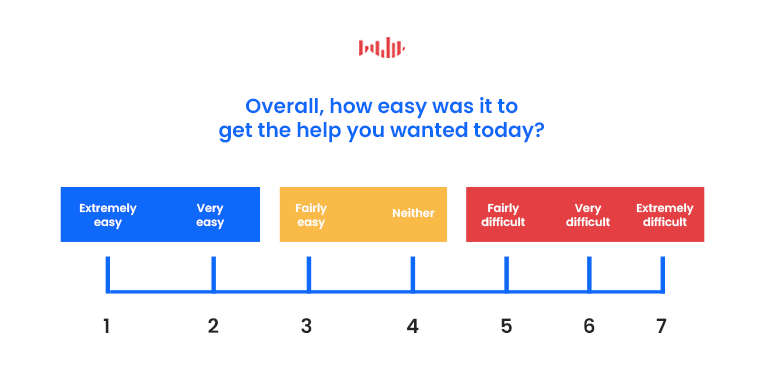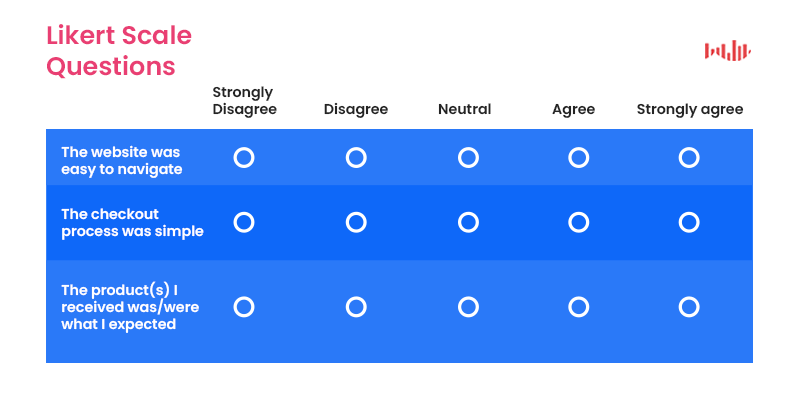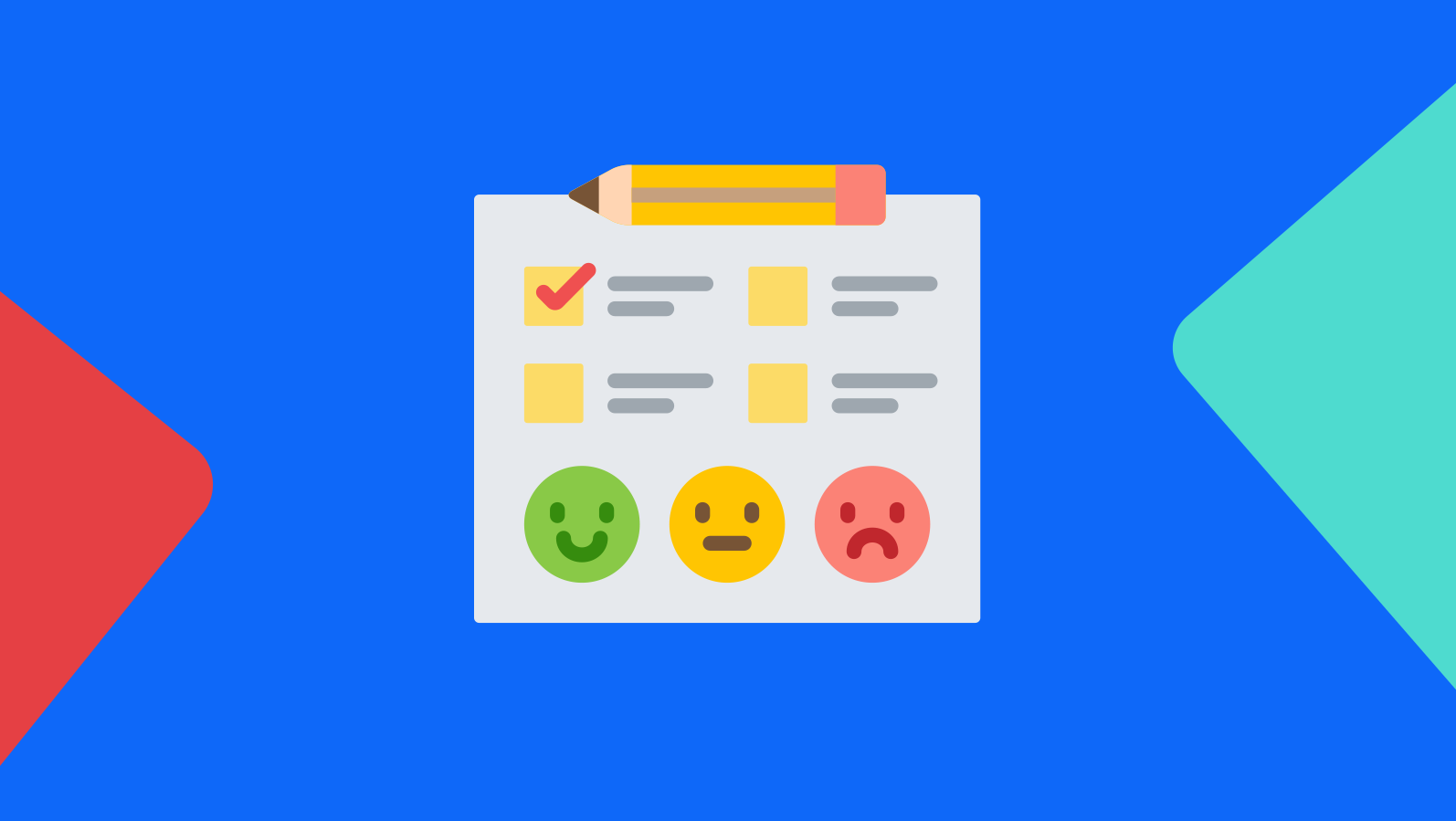The Customer Satisfaction Survey Question Guide
Customer survey questions are the lifeblood of any survey pertaining to customer respondents.
They help your business carry out research on customer satisfaction, the measurement of happiness your customers harbor for your product, experiences and overall company.
To determine your business’s level of customer satisfaction, it is apt to use the customer satisfaction survey. This survey can be configured in four survey types. There are countless kinds of questions to use for measuring customer satisfaction.
There are 7 main types of questions to incorporate into your customer survey. There are also specialized questions your brand will benefit from inquiring. This article will cover both so you can deliver better services, experiences and products for your customers.
Customer Satisfaction Survey Formats
As you’ve learned from our previous article, customer satisfaction surveys are facilitated through 5 types of survey formats. Before we get into the weeds of the suitable questions to use in your customer survey, let’s recap these 5 crucial types of customer surveys.
- Net Promoter Score Surveys (NPS)
- Asks customers how likely they would recommend your company/product on a scale of 0-10. Then you compare the percentage of detractors (0-6 answers) to promoters (9-10 answers) to see where your company stands.
- Assesses your brand’s appeal and uniqueness.
- Customer Satisfaction Score (CSAT)
- Measures customer satisfaction with a particular situation, by asking how satisfied they were with a product or interaction? (Uses a scale of 1-5)
- Unearths valuable information about a customer’s overall happiness with your product or service.
- Customer Effort Score (CES)
- Uses 5-point scale to gauge the ease of customers’ to complete an action. It commonly asks how easy was it to find this product on our site?”
- The options range from “very difficult,” to “somewhat difficult.” Divide the number of responses in the agree range (4 and 5) by the total number of respondents.
- Visual Rating Surveys
- A quick-to-conduct survey on a current experience.
- Uses emojis (smileys, hearts, stars, etc.) to gauge customer feedback.
- Custom Surveys
- Uses targeted questions, specific to your market, product, or service to find details about customer experience (CX).
- Ask follow-up questions to elaborate on what respondents answered prior.
All of these survey types play a major role in gauging different aspects of customer satisfaction. As such, you should understand their unique capabilities and how they each differ from one another.
Once you have a solid understanding of them, you can find various questions within this topic and filter the questions with their corresponding survey type.
Filtering the 7 Customer Survey Satisfaction Question Types
There are 7 main types of questions that are applicable to measuring customer satisfaction. You’ll find that some of these types of questions fit under more than one label of survey types, whereas others are only suitable for one type of survey.
Multiple-choice questions
Multiple-choice questions place limits on the number of answers responders can give per question. Unlike open-ended questions, which require respondents to type in answers, multiple-choice questions require less labor to answer and are easier to tabulate.
Additionally, unlike open-ended questions, which can give rise to long answers, multiple-choice questions typically have shorter answers.
These questions can encompass a wide range of question styles such as nominal questions, rating scale questions, binary scale questions, Likert scale questions, and semantic differential questions.
Rating scale (ordinal) questions
As their name implies, rating scale questions are multiple-choice questions that rely on a scale for rating an aspect of customer satisfaction.
These can exist in two of the survey types aforementioned: in a Net Promotion (NPS) Survey or a Customer Satisfaction Score (CSAT) survey.
An example of the former: Please rate the likelihood of you recommending our product to a friend or colleague on a scale of 0-10.
An example of the latter: Please rate how satisfied you were with your interaction with our customer support representative on a scale of 1-5.

Binary scale questions
Binary scale questions rely on a limit of two answers per question, hence the name “binary.” These can exist simple, yes or no questions, along with questions that can be answered with graphics such as thumbs up/ thumbs down, or with happy face/ sad face emojis.
As such, these questions are used with visual rating surveys. However, they can also function within custom surveys, should there be any obscurity to previous answers in them.
That is because these questions are used to clear any ambiguity surrounding some rating scale questions. For example, the 3-star experience of one responder can be the 5-star experience of another. But were they both satisfied with the experience overall?
An example of a binary scale question: Did you find the product you were looking for on our website? Yes / No
Nominal questions
Nominal questions are naming scales, which pinpoint different categories of questions. These answers cannot be assigned a numerical value. In addition, the answers are not created to be connected in any way, unless you add an option for “all of the above.”
The answers to nominal questions have no specific order; they are meant to carry significance for variable labels only.
An example of a nominal question: Which brand of laptops from our store do you prefer?
Answers: Apple, Microsoft, Dell, Acer, Samsung, Asos
As you can see, the order of these answers doesn’t matter, neither are they tied to any number. The significance lies in the label only; it shows researchers which brand its customers prefer.
These can be used in custom surveys or even in visual ratings surveys, if you use an emoji for each option. This can be done to test branding, with each emoji taking the form of a brand’s logo.
Likert scale questions

Likert scale questions are used in Likert scale surveys. The answers exist as a 5- or 7- point scale to determine how customers feel. The bottom number (always 1) represents the lowest extreme view, while the top number (either a 5 or 7) represents the highest extreme view.
The numbers 3 (on a 5-point scale) and 4 (on a 7-point scale), represent the middle, aka the moderate view.
An example of a Likert scale question:
On a scale of 1-5, how strongly do you agree with the following:
[Your product]’s had an easy to use and understand our instruction manual.
1 – Strongly disagree
2 – Somewhat disagree
3 – Neither agree nor disagree
4 – Somewhat agree
5 – Strongly agree
Semantic differential questions
Like Likert scale questions, Semantic differential questions also feature a 5- or 7-point scale. These questions, however, offer a differentiator, in that they ask for more descriptive answers.
Instead of asking responders to either agree or disagree to a statement, semantic differential questions ask the customer to select an option that most accurately represents their opinion on a product, service or experience.
An example of a semantic differential question:
How helpful was our interactive website experience?
1 – Not helpful at all
2 – Barely helpful
3 – Neither helpful nor unhelpful
4 – Somewhat helpful
5 – Very helpful
Open-ended questions
An open-ended question can be used to buttress virtually any of the mentioned survey types in this article. That is because these questions use an open field for customers to type out their answers.
Usually, these questions ask for clarity or elaboration on a previous multiple-choice or ratings question. These questions are best used to cut back on any ambiguity or to delve further into an issue without the need to ask multiple questions.
Since the answer is in a field that customers can type, they can express themselves more fully and add all the details present in a problem, concern or preference.
This type of question is more difficult to process since it is longer and unique to each respondent, however, it is excellent for finding new ideas and opportunities for betterment.
An example of an open-ended question:
Is there anything on our website we could improve for a better digital experience? If so, what is it?
More Examples of Specific Questions for Customer Satisfaction
The above was designed so that you can become fully acquainted with the main question types in customer satisfaction surveys.
But with so many questions out there in relation to customer satisfaction, it may be confusing to tie specific ones to a question type, let alone a survey type. Here are a few more examples of specific questions you may potentially use for your customer feedback survey.
- How would you rate the interaction you had with our salesman, on a scale of 1-5?
- Question type: Customer Satisfaction (CSAT)
- Can you rate how likely you are to recommend our brand to a friend or family member on a scale of 0-10?
- Question type: NPS survey question
- How easy was it to solve your issue with us? (Select from 1-5)
- Question type: Customer Effort Score (CES)
- Why did you feel you had an overwhelmingly positive experience? (multiple-choice)
- Question type: Custom question
- How can we improve this product? Please provide all the feedback you can.
- Question type: Open-ended
Excelling in the Customer Satisfaction Front
Customer satisfaction can be a tough nut to crack, even when you build a seemingly perfect customer survey. To put insult to injury, customer satisfaction surveys have low response rates, as they hover between 10-30%.
You should remember that these surveys should only be sent to customers, ie, the portion of your target market that has made purchases.
Also, keep in mind that in some cases, you may combine all survey questions and even all survey types into one survey, so long as it is relevant to your case.
Make sure each survey you create to study customer satisfaction is centered around topics relevant to your customers’ recent purchases and experiences. Apply best practices and you’ll improve the low response rate in no time.
Frequently asked questions
What is a customer survey?
A customer survey is any type of survey that is distributed to existing customers of a business.
What can a customer survey achieve?
Customer surveys help a company understand customer satisfaction and research changes that can be made to improve customer satisfaction.
What types of questions are included in customer surveys?
The types of questions used in customer surveys are multiple-choice questions, rating scale questions, binary scale questions, nominal questions, Likert scale questions, semantic differential questions, and open-ended questions.
What is a Likert scale?
A Likert scale is a type of question used in surveys. It provides a statement and asks respondents to rate their level of agreement or disagreement on a scale of 1 - 5.
How are semantic differential questions different from Likert scale questions?
Semantic differential questions offer more descriptive answers than Likert scale questions, which only allow respondents to agree or disagree with a statement.
Pollfish Marketing Team
Ready to Try Pollfish?
Create your survey with AI, target high-quality respondents starting at $0.95 per complete, and start getting results in just minutes in real-time. From running a simple product concept survey to managing a constant stream of trackers for dozens of clients in dozens of countries, we’ve got you.

